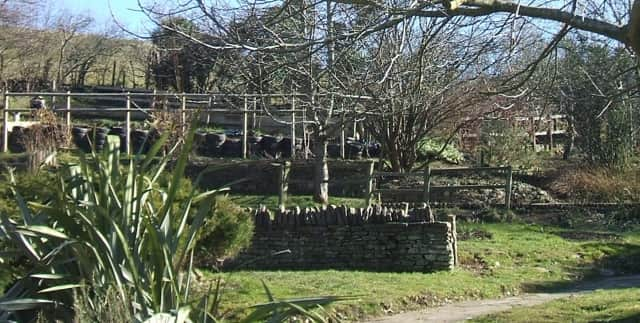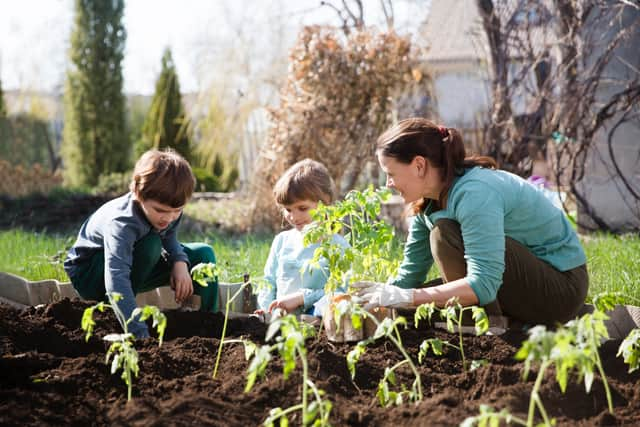Where are the best community gardens in Bristol for visiting or volunteering
and live on Freeview channel 276
The first week in April marks the beginning of Community Gardening Week, an initiative that works to celebrate all things community and all things gardening. Community gardens come in a myriad of shapes, sizes, and styles.
They all have a different heart and unique mission. What each one of them has in common though, is the ability to bring people together using the power of nature to inspire, heal and make people happy.
Advertisement
Hide AdAdvertisement
Hide AdThe initiative, running from 4th-10th April, is particularly good at shining a light on some of the urban community gardens across the country and showcases the positive work they do and the effects this can have on urban city communities.
Unsurprisingly, as a city that is passionate about nature, sustainability, and social impact, Bristol is full to the brim of community garden projects and many of them work with volunteers to create a place perfect for visiting.
To celebrate the week-long initiative, we’ve delved into some of the best community gardens across the city to highlight their work, what they do and offer, and which one’s you are able to visit.


The one-acre site within the popular St. Werburghs City Farm, positioned on the south side of the graffiti tunnel on Mina Road is a community garden with free public access all year round, 24-7.
Advertisement
Hide AdAdvertisement
Hide AdThe sloped site has a mix of raised beds with flowers, vegetables and soft fruit nestled amongst a border of trees.
You can wander up through the terraces, and in the sunny seasons, you are guaranteed to find a warm spot to watch the butterflies, birds and bees busy at work helping to pollinate the flowers. Keep walking up and you’ll reach the Mound and Narroways Nature Reserve.
The garden is run by volunteers and a supported training team, but they also host weekly social gardening sessions for groups and individuals on Thursdays from 10 am to 12.30 pm.
This one isn’t the same as a community garden that you can simply head to spend time in nature in. Propagation Place takes it one step further and is a brilliant initiative from the people behind St. Werburgh’s City Farm.
Advertisement
Hide AdAdvertisement
Hide AdIn 2015, St. Werburghs City Farm decided to do more to support their local food system. As a tiny smallholding close to the city centre, the City Farm doesn’t have much space but they wanted to make a big impact.
Having worked out that if they could supply strong, healthy plug plants to the neighbouring 13 acres of allotments that spread up toward Ashley Down, they would be supporting their local food system, plus starting a vibrant community business that could provide loads of great volunteering and educational opportunities.
With the help of over 300 volunteers, they are now a busy community growing garden, and provide thousands of seedlings for sale online and to local residents. If you fancy stepping in to volunteer, you can apply on their website.
Five years after a passionate group of volunteers came together to turn a disused bowling green into a vibrant project called Redcatch Community Garden, it is now a thriving garden, cafe, and plant nursery at the heart of the community.
Advertisement
Hide AdAdvertisement
Hide AdWith a huge amount of community support, the garden is now a Community Benefit Society (CBS) with charitable status and a member of Cooperatives UK. A CBS operates on a not-for-profit basis and has aims that benefit the whole community.
The garden offers opportunities for engagement by bringing local people together to learn, socialise, share skills and experiences, and improve their health and wellbeing.
So, how do you visit? You can pop by the garden to go to Roots, their cafe, or their shop or the garden. They are open from 9:30 am to 4 pm every day, subject to weather conditions, so you can pop down to see the work of the talented volunteers and buy some plants.
They also run events, from holiday clubs for children to poetry events and open mic nights in the garden.
Advertisement
Hide AdAdvertisement
Hide AdThe Blaise Community Garden is a particularly special place made up of just under one acre and hidden behind the walls of the Blaise Estate in Henbury.
In June 2013, the Friends of Blaise and Henbury Conservation Society were granted access behind the walls, to restore a part of the garden and create Henbury’s first community kitchen garden.
The project is entirely volunteer-led and is intended to provide a chance for members of the community to come together, learn about growing plants, and share their time while growing some delicious produce.
The community garden is open Wednesday and Saturday from 10 am to 2 pm, as well as on Mondays in summer, too. You are very welcome to take a walk around, sit in the sun and just relax, however, if you’d like to get involved and volunteer, the friends of Blaise assure that you will receive a great welcome, a careful briefing of what is involved and the opportunity to become a member of the garden.
Advertisement
Hide AdAdvertisement
Hide AdThe garden also hosts events such as a spring market, which is coming up in May, and events for the children such as the Kids Dig event where they can learn how to grow home-sown vegetables.


This one’s a bit of a different one! Horfield Community Orchard was set up in 1998 when a small group of hardworking volunteers took on some very overgrown plots on the edge of a Horfield and District Allotment Association site in Bristol.
Today, the site is an orchard with 100 different fruit trees and it functions as an independent community food project with the help of the working members, who are all volunteers.
Aiming to show that locally grown fruit can be eaten and enjoyed all year round, you can find that summer brings soft fruit, plums, and cherries to the site, while early apples and pears usually ripen in July and later varieties are harvested until November.
Advertisement
Hide AdAdvertisement
Hide AdMembership is open to anyone, and through it, you can benefit from nature therapy, learn how to grow fruit and be a part of a community that gives back to Bristol and the environment. Keep an eye out on the website for when the orchard is open to the public!
Comment Guidelines
National World encourages reader discussion on our stories. User feedback, insights and back-and-forth exchanges add a rich layer of context to reporting. Please review our Community Guidelines before commenting.
